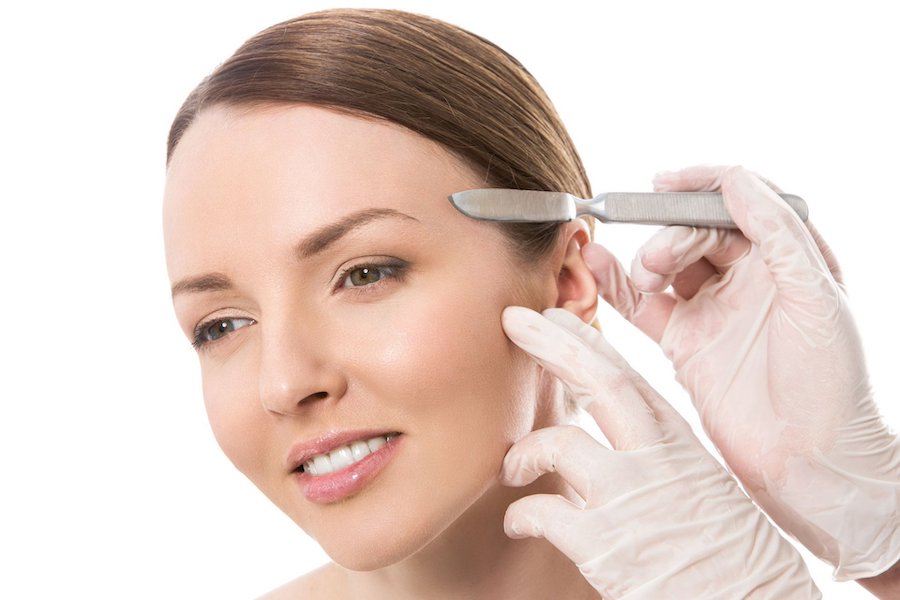Dermaplaning is a new trend in beautifying cosmetic procedures. Many salons offer it as part of a deal with their facials, promising great results and improvement both in what your skin looks and feels like. It’s praised as the easiest and fastest way to rejuvenate your face without using chemicals or invasive cosmetic procedures. But is it as good as it sounds? Is it dangerous? Are there any side effects? And most importantly – is it worth the hype? We get it, you have questions and we found answers. Here’s everything you need to know about dermaplaning.
What Is Dermaplaning?
Dermaplaning is quite a simple skin treatment that uses a blade or a scalpel to scrape away a thin top layer of dead skin cells and also removes hairs from one’s face. It’s kind of similar to saving, except it’s done by a professional who knows how to apply the right amount of pressure to remove that “peach fuzz” and dead skin cells, yet never break the surface of the skin and avoid cuts. It’s painless and relatively quick.

How Long Does Dermaplaning Take
Dermaplaning is actually a very quick procedure, it usually takes about 10 minutes, so few places offer it on its own. Instead, dermaplaning is often offered as an add-on to a facial. The idea is to do this before the actual facial so that once you remove the dead skin cells, the skin underneath can actually absorb all the creams and serums better and the facial will become even more effective.

Why Would One Consider Dermaplaning?
The idea behind dermaplaning is that it will make your skin super soft and plump, painlessly remove unwanted facial hair and peach fuzz, even out your skin texture and general complexion, make beauty products more effective and make your makeup glide on super smoothly giving you that airbrushed look. What’s not to like?

How Often Should You Do It?
Since it’s an exfoliating and hair removing procedure, it’s generally advised to get it not more often than once a month. This will keep your skin looking soft and hairless, without irritating it too much. Remember, overeating is bad for us, so don’t try to do this every other week. For best results, it’s best to talk to a dermatologist, who will be most qualified to tell you what’s the right thing to do for your specific skin type.

Common Misconceptions About Dermaplaning
Many people are confused about dermaplaning and think that if they get it done, the soft peach fuzz on their face will grow back as a full thick beard. That’s not the case at all, it’s a myth. The peach fuzz will grow back just the same, it just might feel a bit more stubbly at first because your hair was cut off and the ends are more blunt. It won’t look darker or thicker at all. Another common misconception is that it’s better to wax the hair on your face instead of dermaplaning, to avoid stubble, but actually waxing is way more traumatic on your skin, and dermaplaning is painless and doesn’t pull or traumatize your skin.

Dermaplaning At Home
Many women wonder if you can do dermaplaning at home. We wouldn’t suggest it. Even though the procedure looks simple enough, it’s done with a scalpel and there’s always a chance that you can cut yourself. It’s better to have a professional do it. However, many women choose to shave their face, which also gets rid of peach fuzz and has a slight exfoliating effect, that’s similar to dermaplaning.

Dermaplaning Side Effects
Dermaplaning is safe for most people, however, you have to keep in mind that removing a thin layer of your skin, even though it’s dead skin cells, makes you more vulnerable to UV rays. So you have to be vigilant with sunscreen, but that’s something you should do every day either way. Dermaplaning can also be irritating if you have super sensitive skin, suffer from rosacea, acne or have many breakouts.